

Hank Gowdy: Baseball Player and War Hero
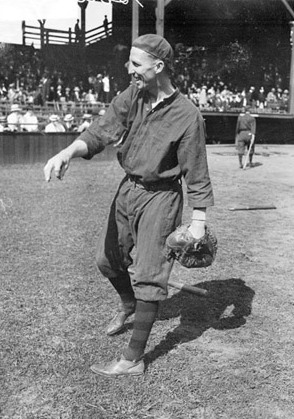 What an amazing life Hank Gowdy had!
How would you like to have played major league baseball
during the tough and tumble early years of the 20th century, been
the star and most valuable player of the 1914 World Series as a
member of the championship “miracle” Boston Braves team, and been a
bona fide war hero who served his country in
two world wars?
Henry Morgan Gowdy was a man who epitomized, though his play
on the baseball field and his exploits in the Armed Forces, the
inexorable link between our National Pastime and service in the
military.
What an amazing life Hank Gowdy had!
How would you like to have played major league baseball
during the tough and tumble early years of the 20th century, been
the star and most valuable player of the 1914 World Series as a
member of the championship “miracle” Boston Braves team, and been a
bona fide war hero who served his country in
two world wars?
Henry Morgan Gowdy was a man who epitomized, though his play
on the baseball field and his exploits in the Armed Forces, the
inexorable link between our National Pastime and service in the
military.
Henry “Hank”
Gowdy was born on August 24, 1889 in Columbus, Ohio.
His father was Horace C. Gowdy, an independent man of modest
means, and his mother, Carrie Burhart.
Hank was taught early on to
work hard and do his chores but like so many of his friends, he
gravitated towards the playing fields once those chores were done.
He played football, basketball, and baseball at Hubbard
Elementary and North High School in Columbus.
Though he enjoyed all team sports, he loved
baseball and convinced an official from the
Columbus Senators semipro team to give him a tryout.
His talents on the ball field began to blossom and he first
signed up professionally with Lancaster in the Ohio State League. In
1909, New York Giants scout Billy Doyle purchased his contract for
$40 back pay due from Lancaster. He
was assigned to Dallas (Texas League) for a few months’ more
seasoning. By this
time, Gowdy was
a strapping six foot two, 180-pounder who was considered a team
leader.
Hank's major
league career started in 1910, right during the height of the “deadball
era” when he briefly played with John McGraw's Giants.
He only batted .214 that season and, after a few games during
the 1911 season, he was traded to the Boston Braves.
Seeing some action in both 1912 and 1913, he still had not
quite found his stride, accumulating 101 at-bats for the Braves but
spending most of the two years honing his craft as a catcher for the
Buffalo Bisons. It was a “make it or break it” time period for the
youngster, but it was at Buffalo that he hooked up with a man who
would become a major influence in his life.
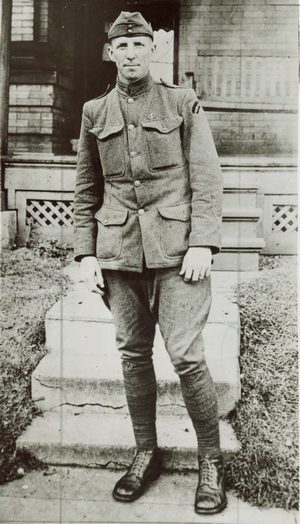 |
| Photo from Frank Ceresi Collection |
During the
latter part of the 1912 season, the young catcher began to make his
mark under the watchful eye of veteran manager George Stallings.
The son of a Confederate General, Stallings was a larger than
life character known for his crafty, hardnosed baseball ways.
A superstitious and tough man who was never intimidated on or
off the baseball diamond, Stallings had been managing in the
baseball vineyards for years and had developed a reputation for
being a fine judge of baseball talent.
He was especially looking for men who not only had the
necessary skills to play the game but who could lead the team on the
field as well. Stallings spotted what he wanted in the young Ohioan
and became one of Hank Gowdy's most ardent supporters. The two
seemed the perfect match. Both were hardnosed, no-nonsense natural
leaders of men. That trait proved to serve both men well.
Even though
Stallings left the Bisons in 1913, his “field general” Hank Gowdy
ended up batting well over .300 for the year and became the mainstay
of the team. By the
year's end Gowdy had developed leadership capabilities while playing
perhaps the most vital position on the team . . . that of catcher.
Their separation would be brief, for Gowdy and Stallings soon
reunited. By August of
that year, Stallings took the helm for the Braves and quickly
recruited young Mr. Gowdy to help him anchor his new squad.
In the late 19th
century, the Boston Braves (originally called the Red Stockings, the
Red Caps, and the Beaneaters) were at the top of majors winning
several championships, but by the time Stallings and Gowdy joined
the club, the Braves were known as perennial losers in the National
League - the senior circuit’s doormats. By the time the 1914 began,
they had been absolutely dominated for several years by McGraw's New
York Giants. In fact,
the Giants were coming off a season in 1913 in which they won 101
games while capturing the National League pennant. Stallings' Braves
ended up a distant fourth place.
The Boston boys won 69 games but lost 82. Sure, that was an
improvement of their last-place finish in 1912, when they barely
squeaked out 52 victories, but most people thought that the 1914
season would simply bring more of the same.
That is, more misery for the woeful Boston Braves and more
joy to the great New York Giants with their star pitcher Christy
“The Christian Gentleman” Mathewson, at the top of his game.
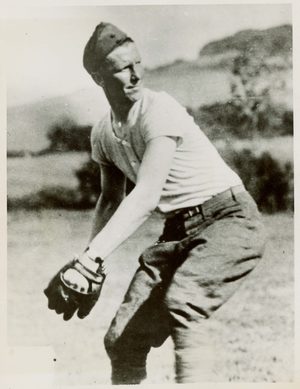 |
| Hank Gowdy in France Photo from Frank Ceresi Collection |
But fate had
other plans for Hank Gowdy, his manager George Stallings, and their
team, for 1914 would become a spectacular season that is still
considered amongst the most thrilling single baseball seasons of
them all. Not only did
the Braves embark on the greatest team comeback in major league
baseball history - coming back from being over 20 games behind the
first-place Giants on Independence Day 1914 - but the team overtook
their old nemesis with ease in September and went on to sweep the
heavily favored American League Champion Philadelphia Athletics in
the World Series, four games to none.
Hank Gowdy was in his prime.
Much to
Stallings’s joy and McGraw’s consternation, the “field commander”
Gowdy made several clutch hits against Mathewson during the pennant
drive in late August and early September.
Hank’s star burned most brightly in the cool air and gusty
winds when summer turned to fall, when baseball is played at its
toughest and best, during the October classic, baseball’s biggest
stage, in the World Series. Having dispatched McGraw’s men, this
time the duo faced the cunning and patrician Connie Mack, the A’s
grand man who had carefully assembled what was thought to be, by
far, the best team in baseball.
Stallings,
Gowdy, and their men had other plans. Hank Gowdy proved to be the
original “Mr. October,” long before Reggie Jackson claimed that
moniker. Gowdy hit
safely six times and batted .545 for the World Series with three
doubles, a homer, and a triple.
He was the peerless clutch hitter who anchored a team loaded
with characters like Rabbit Maranville and grizzled vets like Johnny
Evers. He also made key
hits during all of the games and eventually won the final game by
going 3-for-4.. His bat
was, as they say, “on fire!”
Later, Stallings himself would state flatly that Gowdy was
the most valuable player during the “miracle” run. He called the
games well, too. The A’s only scored five earned runs in the four
World Series games.
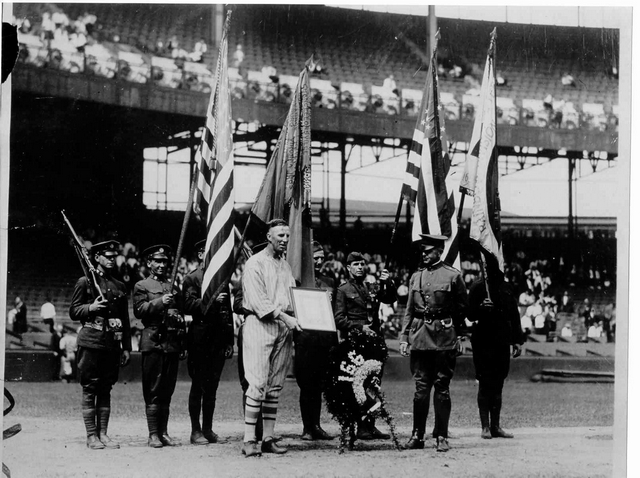
For two and a
half years, Gowdy continued to catch for the Braves but the clouds
of war soon interrupted the thrills of baseball. Hank, a very
patriotic man who pined to serve his country, decided to lay down
his bat for something more important. Soon he traded his baseball
uniform for military garb and became the
very first major leaguer
to enlist in the Armed Forces during World War I.
On June 1, 1917, Gowdy signed up to serve in the Ohio
National Guard and eventually reported for duty on July 15, 1917.
He was soon heading for the front lines in Europe. He later
said that he saw things “no man should see”.
Baseball and the cheering crowds from Boston seemed a long
ways away. The fighting was tough and brutal against the Germans, a
determined enemy.
Hank Gowdy's
war record was quite impressive. He served with distinction in the
166th Infantry Regiment and became a part of the famed “Rainbow
Division,” the Fighting 42nd.
Gowdy carried the colors during the war for this spectacular
fighting unit. General
Pershing himself dubbed them the “Rainbow Division” since they had
the uncanny “luck” of being surrounded by actual rainbows on their
way to and during the heavy combat they saw
in
His regimental commanding officer, Colonel B W Hough, is quoted as saying that Gowdy was one of his top men in a regiment of many great soldiers. “Every outfit ought to have somebody like Hank. The boys idolize him and he gets them all stirred up with his baseball stories. He helps ‘em forget about the terror of war. He carried the flag and . . . he was one of them who heaved gas bombs at the enemy . . . he was fantastic!”
Casualties were high but unlike so many of his counterparts in the Rainbow Division, Hank Gowdy returned to the United States in one piece. By this time, the returning war vet Gowdy was a bona fide war hero, as popular in Boston as the mayor himself. Hank gladly laid down his rifle and once again picked up his glove and returned to the game he loved. He resumed catching for the Braves from 1919 through mid-1923 when he was traded to his old rivals, the New York Giants, still led by John McGraw. Certainly McGraw remembered Gowdy's clutch hitting as part of the “miracle” team.
Gowdy played
nearly 149 games for the New York Giants during a two and a half
year stretch, and had the opportunity to play in the World Series
again for both 1923 and 1924. The Giants beat the Yankees in six
games in 1923, but bowed to the Senators in 1924.
Gowdy stuck
with the game as a player for several more years, winding up his
career with the Braves again in 1929 and 1930. After 17 years as a
major leaguer, Hank Gowdy was not one to rest on his laurels.
He served as a major league coach through 1948 for three
different teams - the Braves, Reds, and Giants – except for 1943 and
1944. With World War II
underway, Gowdy volunteered to serve his country for a second time.
Initially rejected when he first applied in 1942, the Army took him
early in 1943 and he was commissioned as a captain - at the “ripe
old age” of 53.
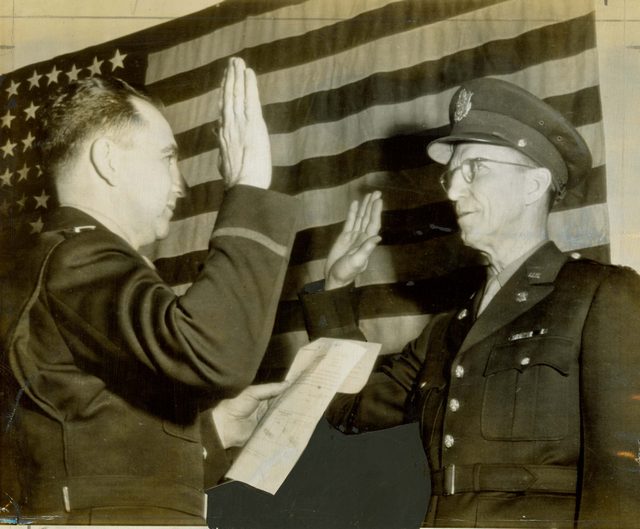 |
| Photo from Frank Ceresi Collection |
He again
served with distinction and became, for an extended period of time,
the Chief Athletic Officer at Fort Benning, Georgia, earning a
promotion to the rank of major. He is the only major league
ballplayer to have served with the armed forces in both World Wars.
To this day,
the baseball diamond at Fort Benning, where soldiers enjoy playing
the National Pastime, is called “Hank Gowdy Field.”
Gowdy passed away at the age of 76 on August 1, 1966 in
Columbus, Ohio. He left no children but to this day, in and around
Columbus, there are relatives and old timers who remember him well.
A fine moral and modest man who conducted himself with class on and
off the ball field, now we know that without any fanfare whatsoever,
he was also a tough military man, who when he left playing baseball
at the highest level to serve his country, he saw the terror of war,
up close and personal. For
that, he deserves our eternal gratitude.
This page last updated June 18, 2008.
Copyright © 2013 Gary Bedingfield (Baseball in Wartime). All Rights Reserved.